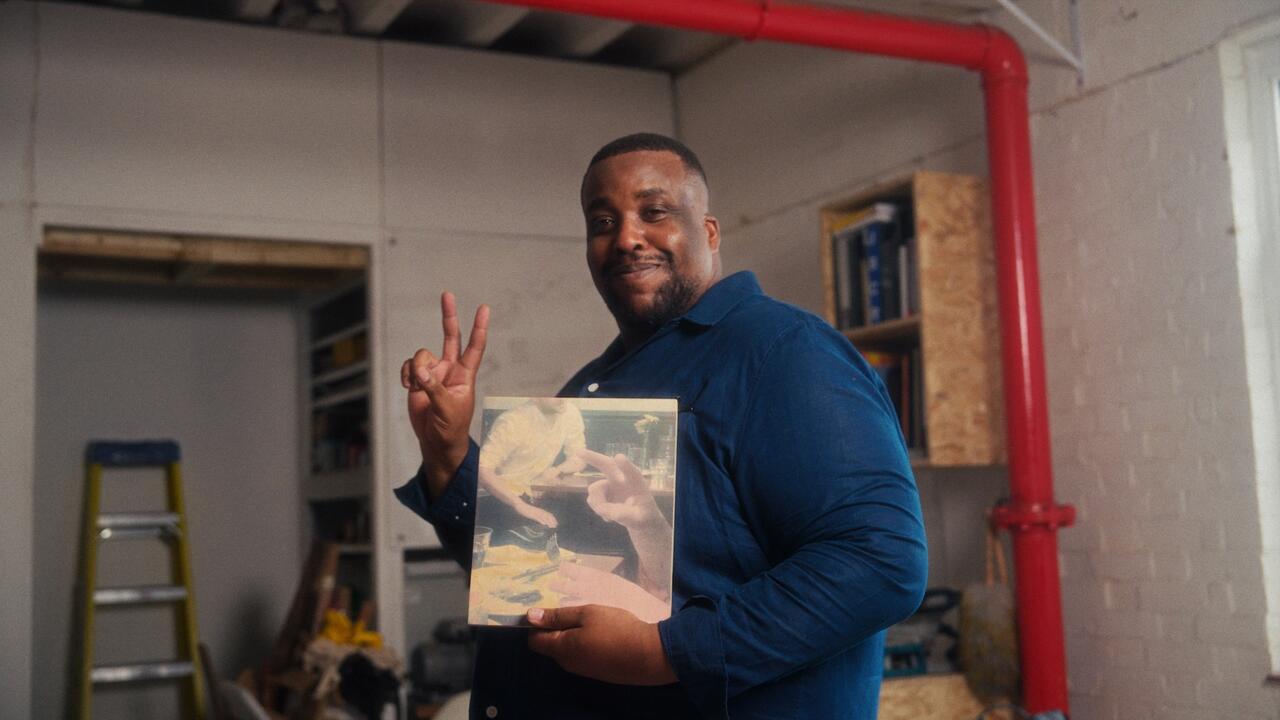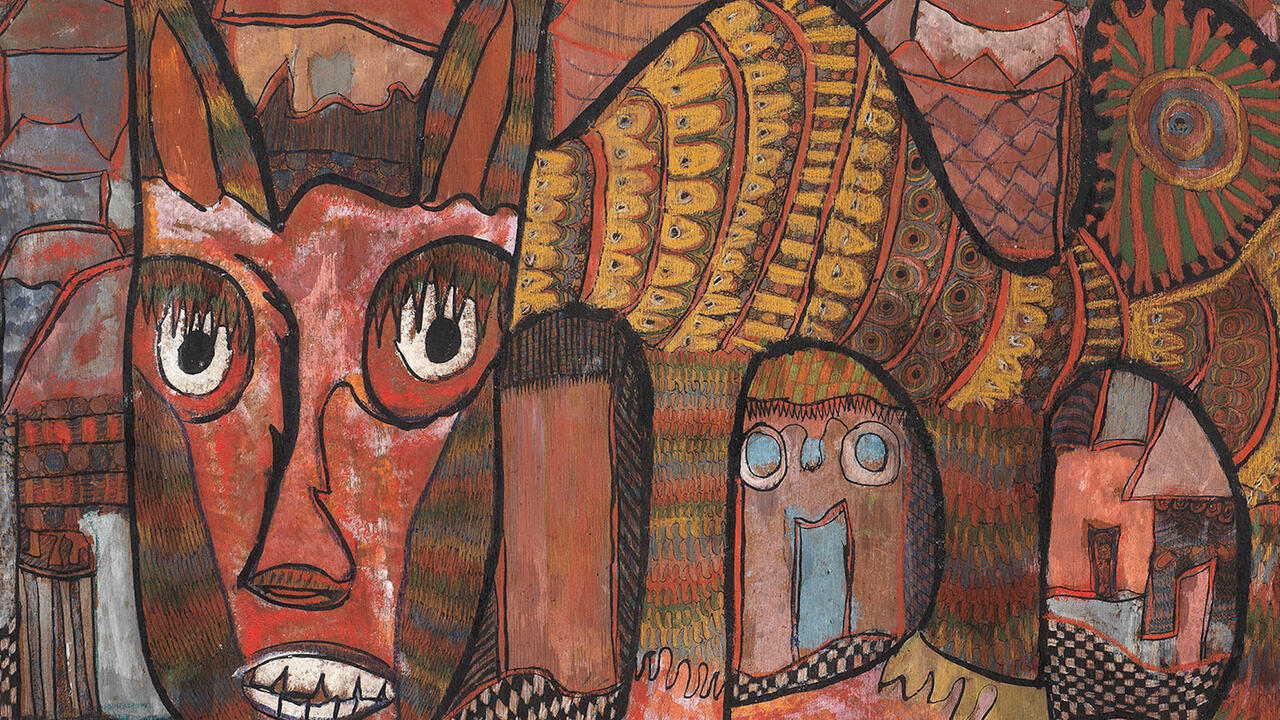Chantal Joffe and Dawn Mellor
Conspicuously curated, this show naughtily matchmade the butch and femme painting styles of Mellor and Joffe respectively. Large numbers of very small paintings by each artist were shown in the same space, but were separated by being arranged in orderly grids. Mellor's paintings are butch both in subject and technique: rigidly but effectively painted in a stiff, dryly opaque, gruntingly baritone style, they resemble stolid Latin American souvenir painting and are almost unrelievedly symmetrical. Joffe's paintings are lightly spontaneous and compositionally asymmetrical. Fluidly moist, they have a delicate quicksilver movement, like windswept chiffon to Mellor's heavy leather. Mellor's works can be seen in relation to, but go beyond, a gay art tradition, which in her case because of her enthusiastic depictions of female torture and cuntal depravity could be called vindaloo dyke. Joffe's works are blatantly heterosexual in their orientation towards the family. She is effortlessly fluent in her descriptions of human emotions through manipulated external appearances.
Seeking to exert a psychological leverage on the viewer, Mellor subjects iconic Hollywood females including Marilyn Monroe, Liza Minelli, Bette Davis, Diana Dors and Shirley Temple to sexually cruel, but unresisted, physical tortures. Other aberrances include raw cannibalism and sadomasochistic auto-eroticism, disease and physical deformity, as well as lesbian, perhaps incestual, paedophilia. These deeply intimate tortures and sufferances, ambiguously inflicted, are in ironic contrast to the fixed public smiles of the characters in receipt of them.
Fetishised hair is a dominant theme in the works, and is used as a restraint on the characters, either literally or figuratively. When not obstructing the eyes as colossal fringes, it spends a lot of time as very long pigtails disappearing into hollow eye sockets, thence through bodies, and finally emerging out of deep, kippered vaginas as in Swollen Joan (1997). Mellor disallows vision to her characters: eyes the windows of the soul and all that are denied to our gaze. Almost without exception, her personas are de-souled by being blinded by their own dumb hair-dos.
In all this, as intended by the artist, there is a potently disrespectful confusion. Heavy, weirdo collisions, disloyal collusions and anxious transpositions and appropriations occur between gay and straight male, feminist and cultural orthodoxies (heavy duty Freudian theory stuff), media and fantasy fetishisms, and above all, deep sexual pathologies such as coprophilia. Although vulnerable to the over-seasoning and over-sugaring inherent in camp, a problem in gay art, Mellor is successfully disquietening and un-life-affirming in her take on the gender that gave us Rosemary West and Myra Hindley.
Joffe's works occupy the ground somewhere between the instantaneousness of photography and the intensification and emphatic distortions of caricature. The origin of her subjects is ambiguous: at times they seem deeply personal, as if from a family photo album, and at others as if they stem from clothes catalogues or advertisements. Her subjects are principally female males are usually only present to copulate with them, which they do in mutually ludicrous, domestic scale pornography, such as Couple 039 (all works 1997).
Many of the paintings are of children, who squint, peer, pose and pout at or resent the viewer, indicating a suspicious nervousnesses toward the camera. Overall, the effect is like finding a stranger's wallet or purse, containing personal photographs. This is simultaneously voyeuristically fascinating yet anonymously remote. Even more so when further photos are found, some of which are extremely rude, and which raise an interesting ethical problem in returning them to their owner.
Joffe's observations are compassionately ludicrous; she shows the inherent gormlessness to which we are all susceptible, no matter how cool, and which reveals our greater humanity. Her females, in their nighties, pyjamas, bathing costumes, naughty underwear and best dresses imply greater stories beyond their poses a more identifiably authentic biography than is first apparent to us from the subject's intended presentation of self. Although there is occasionally a sinister presence in her works, Joffe usually hints at stories of a greater happiness, momentarily eclipsed by the demands of the camera, or observer. This is a neat, generous reversal of the trick usually played on us, where unhappier stories lurk in the background.
Joffe's depictions of humans are joyously, pleasurably insane, as humans can be if approached from the right angle. She has defeated the prejudice against being seen to enjoy the skillful handling of paint by cultivating an apparently flippant style. Similarly, her observations are successfully non-judgmental, again through a superficial frivolity. This extends to her charming pornographies, which can here be seen as just another set of domestic documentaries the innocence of children, the innocence of porn stars like having our photos taken while fucking, by mum, for the family album.
















